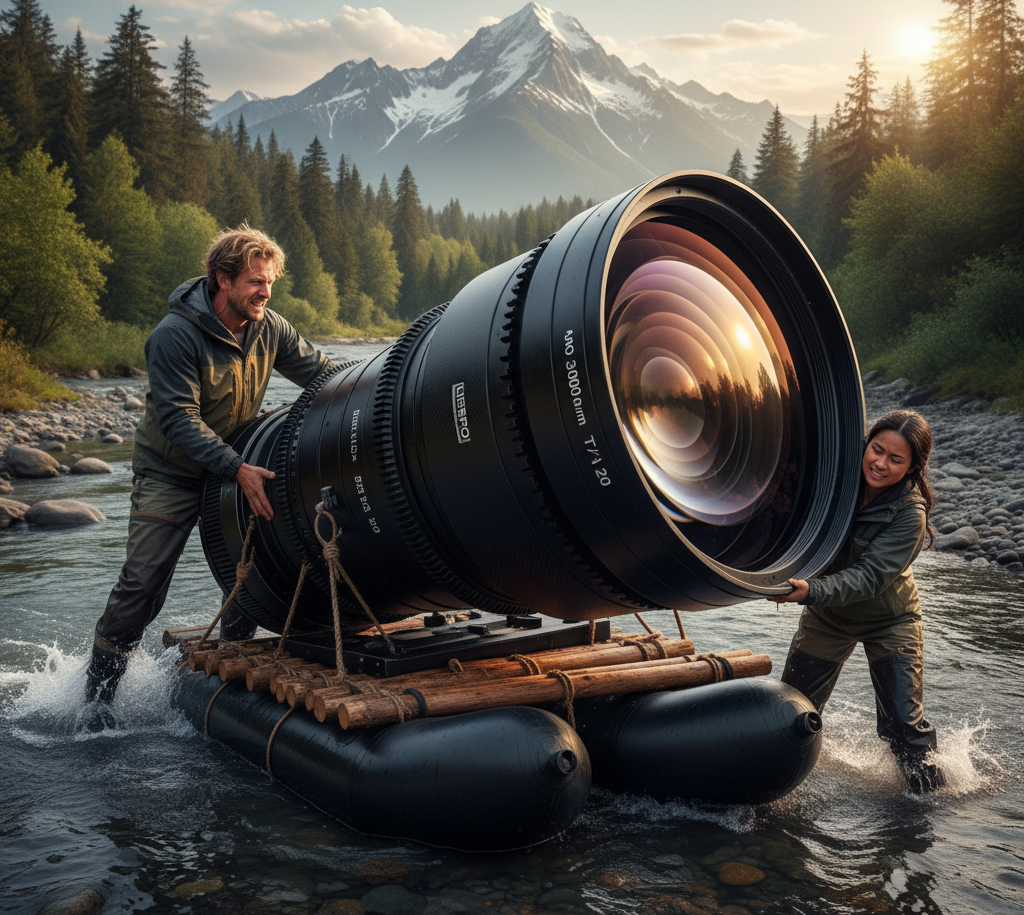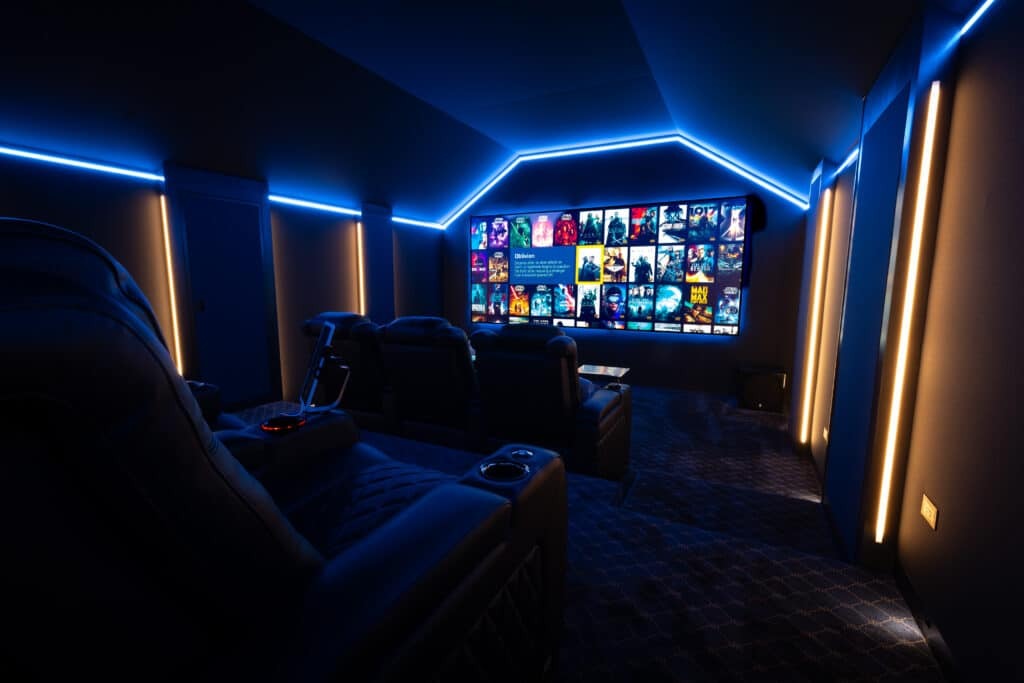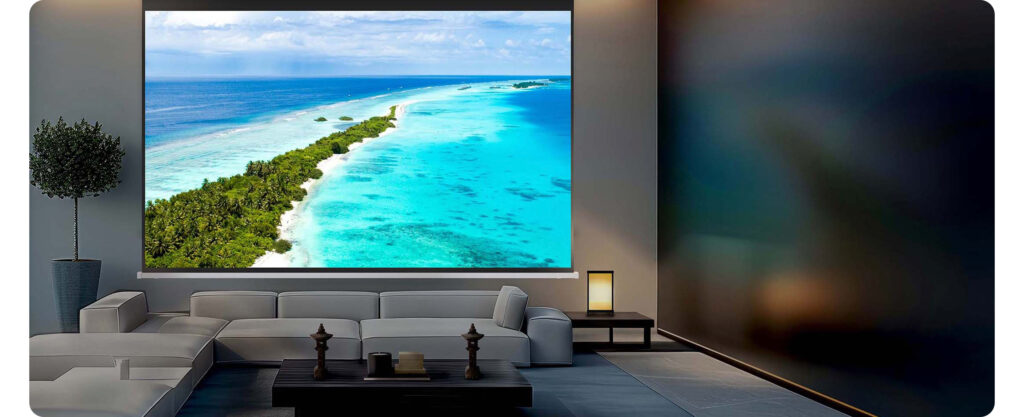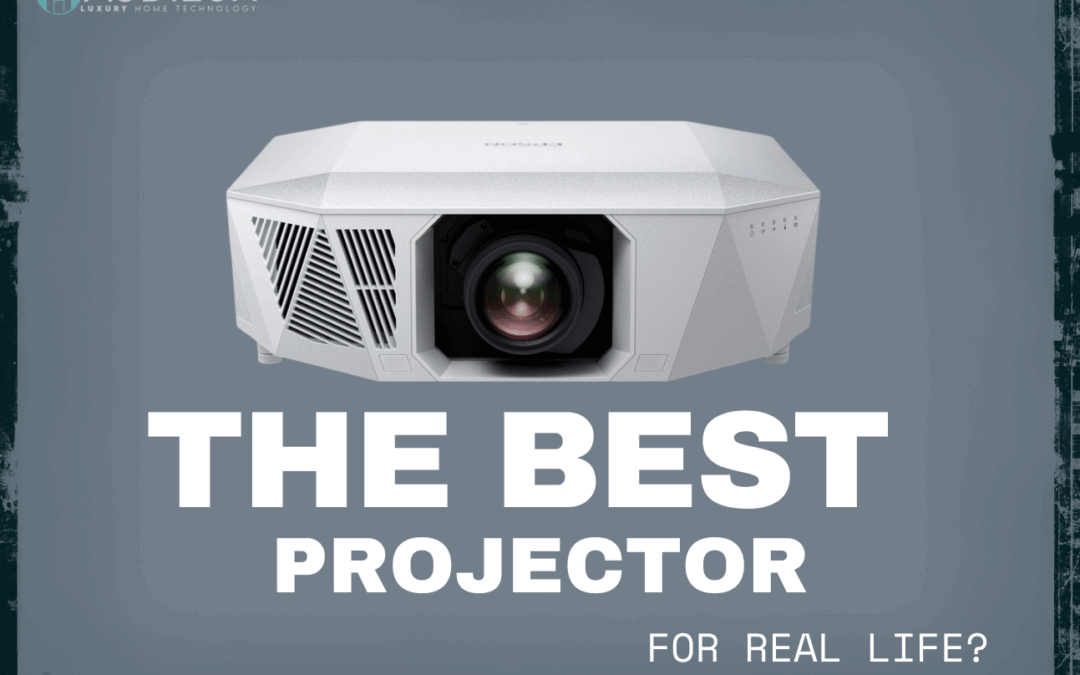A Projector Reality Check
Especially in the home theater enthusiast community, we can all be guilty of hyperfocus. Analysis paralysis is a rite of passage for any aficionado; we spend countless hours reading shootouts, reviews, comparisons, and poring over spec sheets until the wee hours of the morning. It’s part of what makes home theater fun.
On the other side of the lens, this phenomenon manifests itself as something reffered to as “Pixel Peeping”. Personified by internet warriors zooming images in to 400% magnification to look at camera defects, even though these outspoken individuals might be devoid of artistic talent, or be incapable of creating any meaningful work product. (Picture someone lauding a 500lb camera lens, even though it’s so large, you can’t practically transport it anywhere to film anything.)

The reason for my diatribe is simple: Specs and math don’t always tell the whole story. While I’m a firm believer in imaging and acoustic science, a laboratory environment is incredibly different from the real world, and the way we experience home cinemas practically is very different from the story told from a spec sheet. It’s important sometimes to remind ourselves that an experience is more than the sum of parts, or a bill of materials.
Understanding Dynamic Range in Projectors
Dynamic range, in the context of projectors, is the range of brightness levels a projector can display, from the darkest point of the image to the brightest highlights.
Excellent black levels are considered a hallmark of superior picture quality. Simply put, how black is the black? True blacks are the big difference between OLED TVs and all their inferior challengers. Since OLED is an emissive display technology, if a pixel has no luminance information, it actually appears jet black, not some crumby shade of gray.
At the most basic level, there are really only two ways to increase overall dynamic range: You can lower your black level, or you can raise the brightness of your whites.
Anyone who’s been following projector technology for the last decade will be quick to laud for their incredible blacks. (They would not be wrong to do so!) If you’re in a perfectly dark room, JVC’s LCOS technology has really bludgeoned all of the competition when it comes to lowering black levels.
On the other side of the equation, maximum brightness in projectors is measured in lumens. Lumens are one of the only figures we have for reliably comparing the maximum light output we can expect in an image. While brightness levels have slowly increased over the years, they’ve remained relatively stable at around 2000-3000 lumens for the better part of a decade.
All of the effort has gone into improving just one side of the equation.
To recap:
- Black levels define how dark the darkest parts of an image are.
- White levels determine how bright the brightest highlights are.
- The distance and graduations between these two points are the dynamic range.
- A greater dynamic range leads to better image quality, with more shades of light to dark and more depth to every color.
The Reality of Home Cinema Lighting

Back to my original point: While a pitch-black room is a great benchmark, most of us prefer to enjoy a bucket of popcorn or make use of some of the cool LED accent lights we’re all such fans of. Pitch black isn’t really entirely livable.
Not without stubbed toes, spilled popcorn, and perhaps, angry spouses.
We all have to admit that real life does call for at least a little ambient light.
While lowering black levels is a great way to improve picture quality, those popcorn lights and vibey LEDs add ambient light to your projector screen. Since black can only be as dark as the darkest part of the screen, your epic black levels suddenly drop from incredible to mundane. Even with a fantastic projector, the image washes out, leaving you with a very underwhelming experience.
At this point, you’re really left with two options:
- Option A: Kick all the normal people out of the room and embrace the fact that you’re going to be enjoying a lonely existence in your home theater. You do get to watch your movies in utter darkness, but you might turn into a hermit, and you’ll probably end up getting made fun of by your partner
- Option B: Enhance your dynamic range with extra brightness and share the experience with everyone you love.
Suppose option B sounds like the correct course of action. There’s really only one solution: Address the brightness side of the equation. Accept the fact that blacks can only be so black with a livable amount of light in the room, and take the light output up to the next level.
Epson’s Approach: The Brightness Advantage
While most manufacturers keep chasing blacker blacks, Epson has taken a slightly different approach. Instead of focusing all their resources on lowering black levels (though their black levels really are quite respectable), they’ve gone full steam ahead down the road less traveled, creating projectors that are absolute light cannons. We aren’t just talking a little bit brighter either.
While top-of-the-line models from Sony and JVC cap out at around 3300 lumens, Epson’s entry-level offering, the QB-1000, starts at 3300 lumens, and their top-of-the-line QL-7000 is capable of a retina-mesmerizing 10,000!

When we made our annual pilgrimage to CEDIA Expo this year (2025), Epson really drove this point home. They offered a demo experience with two equally sized screens placed side by side. They had their major competitors on one side (Sony, JVC), and the price equivalent Epson projector models on the other. The difference was simply staggering.

The other side effect of having so much light output at your disposal is screen size. Epson is really pushing the envelope, enabling screen sizes as big as 300″.
Of course, there are other options at higher price points. Barco and Christie come to the table with some incredible image quality and no compromises, albeit at a much higher cost of entry.
To head off the hate mail, I realize they aren’t going to win the war of spec sheets. I’m the first to admit that if you’re going for a 130″ screen in a completely dark room, JVC is a better option, but I don’t think that’s how most people really want to use their rooms. In real life, Epson’s higher light output usually provides a better experience.
Ready to Illuminate Your Home Cinema?
Feel free to reach out to find out more!
Frequently Asked Questions
What factors should I consider when choosing a projector for my home theater?
When selecting a projector, consider factors such as brightness (measured in lumens), resolution, contrast ratio, and the type of technology used (LCD, DLP, or LCoS). Additionally, think about the size of your room, the distance from the screen, and the ambient light conditions. A projector with higher lumens is ideal for rooms with more light, while resolution impacts image clarity.
What is the difference between contrast ratio and dynamic range in projectors?
Contrast ratio refers to the difference in brightness between the darkest black and the brightest white a projector can produce. Dynamic range, on the other hand, encompasses the entire spectrum of brightness levels a projector can display, from the darkest to the brightest points. While a high contrast ratio is essential for deep blacks and vibrant colors, a broader dynamic range allows for more subtle gradations in brightness, enhancing overall image quality and depth in the viewing experience.
Are there specific projector brands known for superior brightness?
Yes, certain brands are recognized for their exceptional brightness capabilities. Epson, for instance, is known for producing projectors with high lumen outputs, making them suitable for environments with ambient light. Their models, such as the QB-1000 and QL-7000, offer brightness levels that exceed many competitors. Other brands like Sony and JVC also provide quality projectors, but they typically focus more on achieving deeper blacks rather than maximizing brightness, which can be a crucial factor depending on your viewing conditions.

